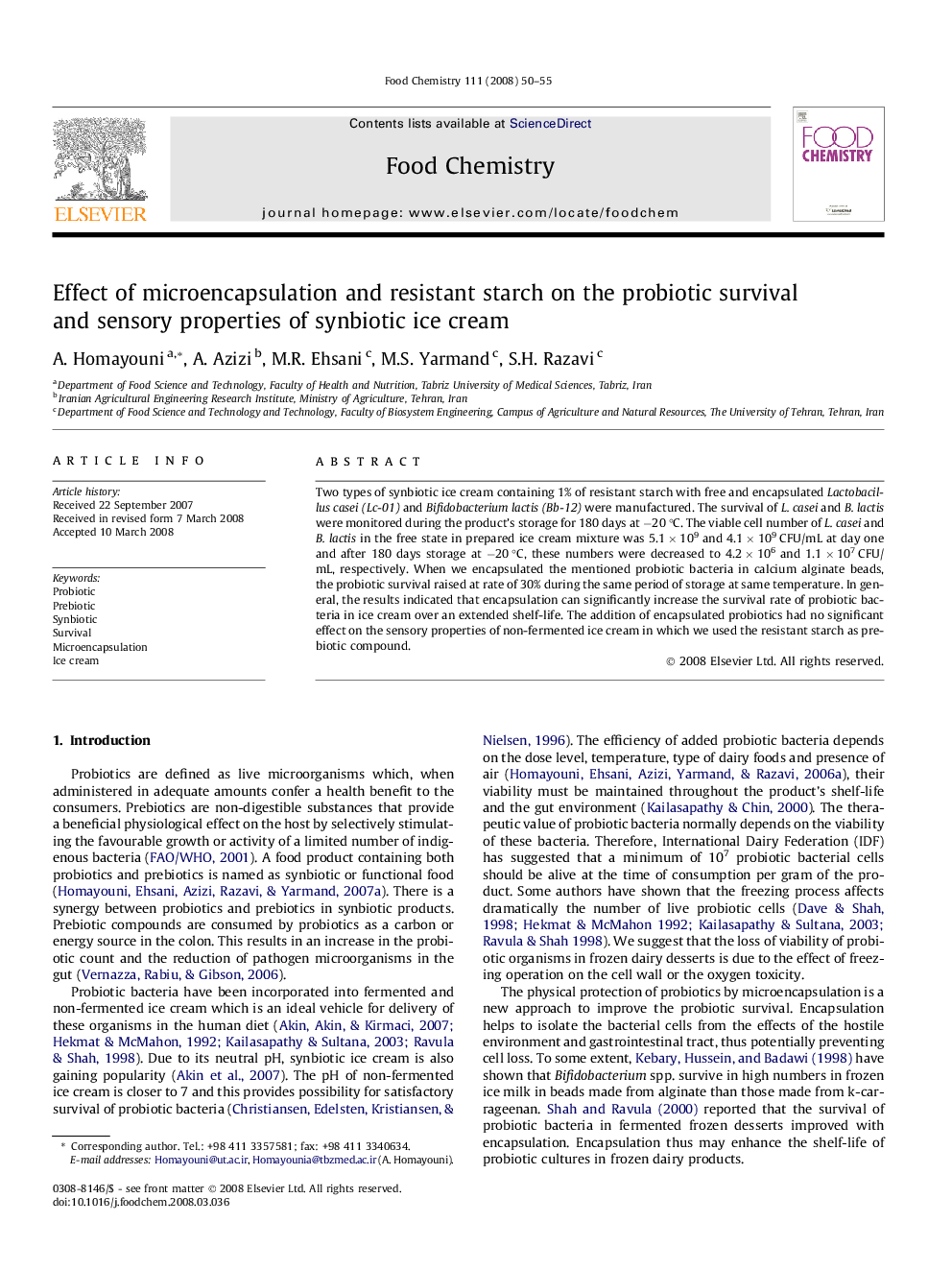| Article ID | Journal | Published Year | Pages | File Type |
|---|---|---|---|---|
| 1188310 | Food Chemistry | 2008 | 6 Pages |
Two types of synbiotic ice cream containing 1% of resistant starch with free and encapsulated Lactobacillus casei (Lc-01) and Bifidobacterium lactis (Bb-12) were manufactured. The survival of L. casei and B. lactis were monitored during the product’s storage for 180 days at −20 °C. The viable cell number of L. casei and B. lactis in the free state in prepared ice cream mixture was 5.1 × 109 and 4.1 × 109 CFU/mL at day one and after 180 days storage at −20 °C, these numbers were decreased to 4.2 × 106 and 1.1 × 107 CFU/mL, respectively. When we encapsulated the mentioned probiotic bacteria in calcium alginate beads, the probiotic survival raised at rate of 30% during the same period of storage at same temperature. In general, the results indicated that encapsulation can significantly increase the survival rate of probiotic bacteria in ice cream over an extended shelf-life. The addition of encapsulated probiotics had no significant effect on the sensory properties of non-fermented ice cream in which we used the resistant starch as prebiotic compound.
